Jean-Paul-Riopelle Canadian/French, 1923-2002 Le Dejeuner, 1957 Signed Riopelle (lr); signed Riopelle, numbered 15 and inscribed as titled on the stretcher Oil on canvas 18 1/4 x 21 3/4 inches (46.35 x 55.24 cm) Provenance: Pierre Matisse Gallery, New York The authenticity of this work has been confirmed by Yeseult Riopelle, who will be issuing a certificate. Jean-Paul-Riopelle was one of the first Canadian artists to earn global recognition. Born in Montreal in 1923, he enrolled at the Ecole du Beaux-Arts de Montreal, but later transferred to the Ecole de Meuble, where he studied with Paul-Emile Borduas Riopelle became a member of Les Automatistes, a movement influenced by Surrealism and founded by Borduas. In 1947, Riopelle moved to Paris and developed his mature style of mosaic-like paintings, in which he held several tubes of paint in one hand and spread the colors with a palette knife, with the opposite hand. The heavy impasto created mountains and valleys, a depth and immediacy heightened by the artist's use of brilliant color, including white, which made a 'spectacular entry,' an 'invasion blanche' in 1955 (Monique Brunet-Weinmann, p. 44 in Jean-Paul-Riopelle, Catalog Raisonne, tome 2, 1954-1959, Yseult Riopelle, 2004). The third element of of Riopelle's technique, in addition to volume and color, was a shiny finish, a degree of glossiness created by juxtaposing matte and shiny pigments. In the late 50s Riopelle began a relationship with the American artist Joan Mitchell which was tempestuous, but lasted for twenty-five years. Their works show the influence each had on the other, especially when they became interested in Monet's waterlily paintings when they lived near Giverny. The artist also made many works on paper, in ink and watercolor; lithographs, collage and sculpture. But it could be argued that he is best known and appreciated for his mature style of brilliant color and thick glossy impasto represented by his paintings of the 1950s. C The Dorothy Levitt Beskind Collection
Cracquelure in red pigment top center, lower center, center right. Also cracking in green pigment at far right, lower right and center left. Cracking in dark blue pigment at center. Cupping in pigments (red at upper center and lower center), cupping and losses in red at lower center. Cupping and losses in blue pigment left of center.
Jean-Paul-Riopelle Canadian/French, 1923-2002 Le Dejeuner, 1957 Signed Riopelle (lr); signed Riopelle, numbered 15 and inscribed as titled on the stretcher Oil on canvas 18 1/4 x 21 3/4 inches (46.35 x 55.24 cm) Provenance: Pierre Matisse Gallery, New York The authenticity of this work has been confirmed by Yeseult Riopelle, who will be issuing a certificate. Jean-Paul-Riopelle was one of the first Canadian artists to earn global recognition. Born in Montreal in 1923, he enrolled at the Ecole du Beaux-Arts de Montreal, but later transferred to the Ecole de Meuble, where he studied with Paul-Emile Borduas Riopelle became a member of Les Automatistes, a movement influenced by Surrealism and founded by Borduas. In 1947, Riopelle moved to Paris and developed his mature style of mosaic-like paintings, in which he held several tubes of paint in one hand and spread the colors with a palette knife, with the opposite hand. The heavy impasto created mountains and valleys, a depth and immediacy heightened by the artist's use of brilliant color, including white, which made a 'spectacular entry,' an 'invasion blanche' in 1955 (Monique Brunet-Weinmann, p. 44 in Jean-Paul-Riopelle, Catalog Raisonne, tome 2, 1954-1959, Yseult Riopelle, 2004). The third element of of Riopelle's technique, in addition to volume and color, was a shiny finish, a degree of glossiness created by juxtaposing matte and shiny pigments. In the late 50s Riopelle began a relationship with the American artist Joan Mitchell which was tempestuous, but lasted for twenty-five years. Their works show the influence each had on the other, especially when they became interested in Monet's waterlily paintings when they lived near Giverny. The artist also made many works on paper, in ink and watercolor; lithographs, collage and sculpture. But it could be argued that he is best known and appreciated for his mature style of brilliant color and thick glossy impasto represented by his paintings of the 1950s. C The Dorothy Levitt Beskind Collection
Cracquelure in red pigment top center, lower center, center right. Also cracking in green pigment at far right, lower right and center left. Cracking in dark blue pigment at center. Cupping in pigments (red at upper center and lower center), cupping and losses in red at lower center. Cupping and losses in blue pigment left of center.
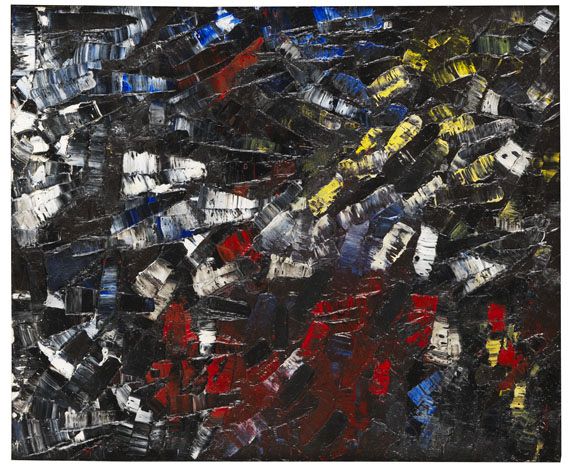
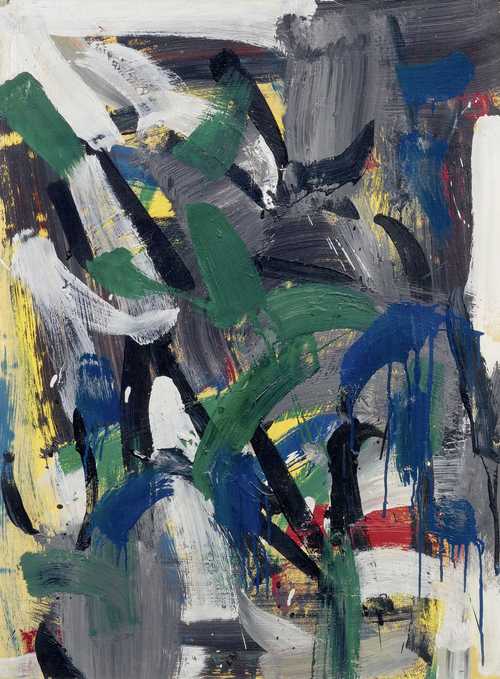
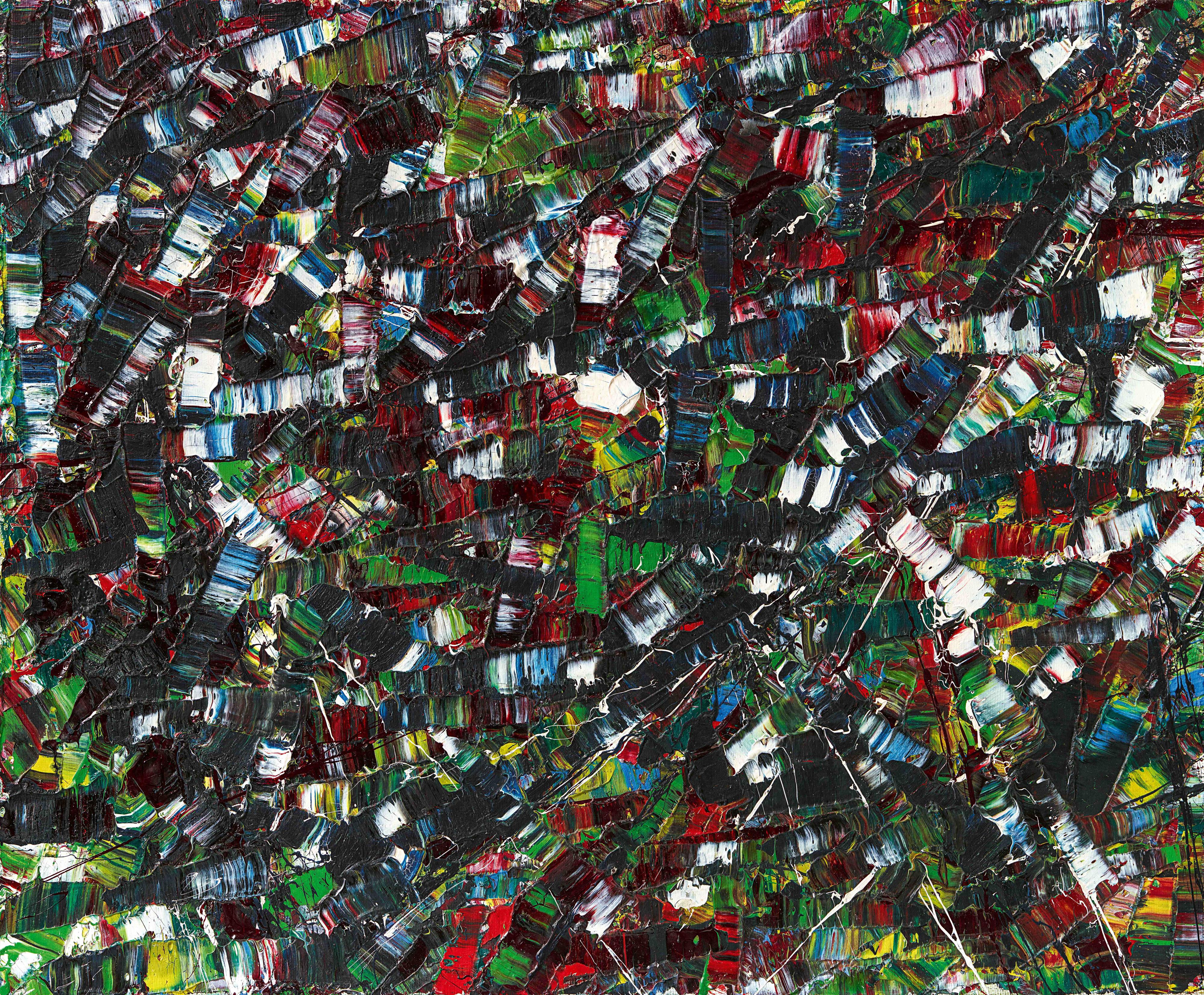
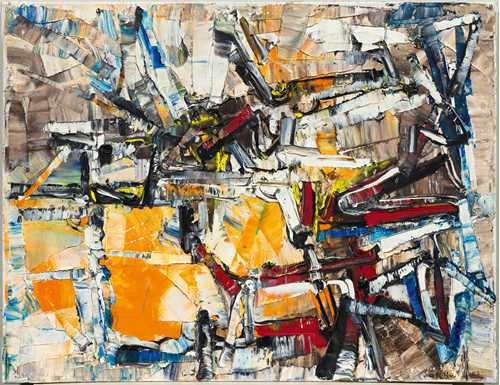
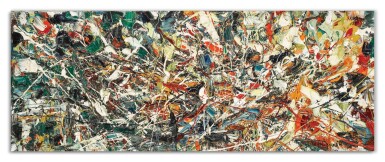

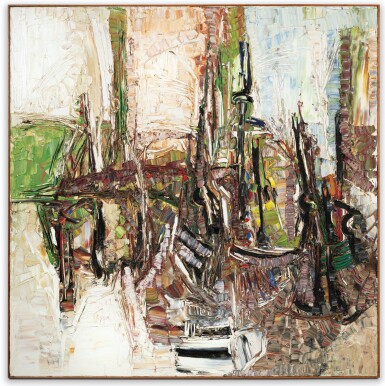



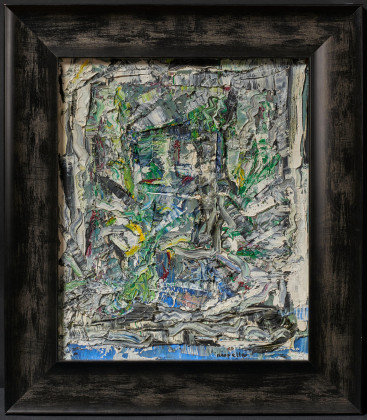


.jpg)

Try LotSearch and its premium features for 7 days - without any costs!
Be notified automatically about new items in upcoming auctions.
Create an alert